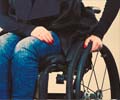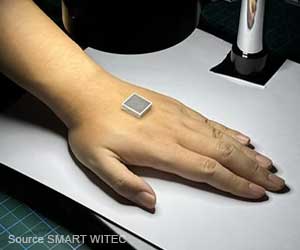EpiPen, an injection of nanoparticles help people recover from injury of the spinal cord. Also, it helps from worsening to paralysis by reprogramming the immune system.

TOP INSIGHT
Tools such as the EpiPen, an injection of nanoparticles help reprogram the immune system from causing negative effects. Instead, they prevent spinal cord injury from worsening by promoting a therapeutic response.
Read More..
"In this work, we demonstrate that instead of overcoming an immune response, we can co-opt the immune response to work for us to promote the therapeutic response," said Lonnie Shea, the Steven A. Goldstein Collegiate Professor of Biomedical Engineering.
Trauma of any kind kicks the body's immune response into gear. In a normal injury, immune cells infiltrate the damaged area and clear debris to initiate the regenerative process.
The central nervous system, however, is usually walled off from the rough-and-tumble of immune activity by the blood-brain barrier. A spinal cord injury breaks that barrier, letting in overzealous immune cells that create too much inflammation for the delicate neural tissues. That leads to the rapid death of neurons, damage to the insulating sheaths around nerve fibers that allow them to send signals, and the formation of a scar that blocks the regeneration of the spinal cord's nerve cells.
All of this contributes to the loss of function below the level of the injury. That spectrum includes everything from paralysis to a loss of sensation for many of the 12,000 new spinal injury patients each year in the United States.
But now, U-M researchers have designed nanoparticles that intercept immune cells on their way to the spinal cord, redirecting them away from the injury. Those that reach the spinal cord have been altered to be more pro-regenerative.
With fewer immune cells at the trauma location, there is less inflammation and tissue deterioration. Second, immune cells that do make it to the injury are less inflammatory and more suited to supporting tissues that are trying to grow back together.
"Hopefully, this technology could lead to new therapeutic strategies not only for patients with spinal cord injury but for those with various inflammatory diseases," said Jonghyuck Park, a U-M research fellow working with Shea.
Previous research has shown success for nanoparticles mitigating trauma caused by the West Nile virus and multiple sclerosis, for example.
"The immune system underlies autoimmune disease, cancer, trauma, regeneration--nearly every major disease," Shea said. "Tools that can target immune cells and reprogram them to a desired response have numerous opportunities for treating or managing disease."
Source-Eurekalert
 MEDINDIA
MEDINDIA



 Email
Email








